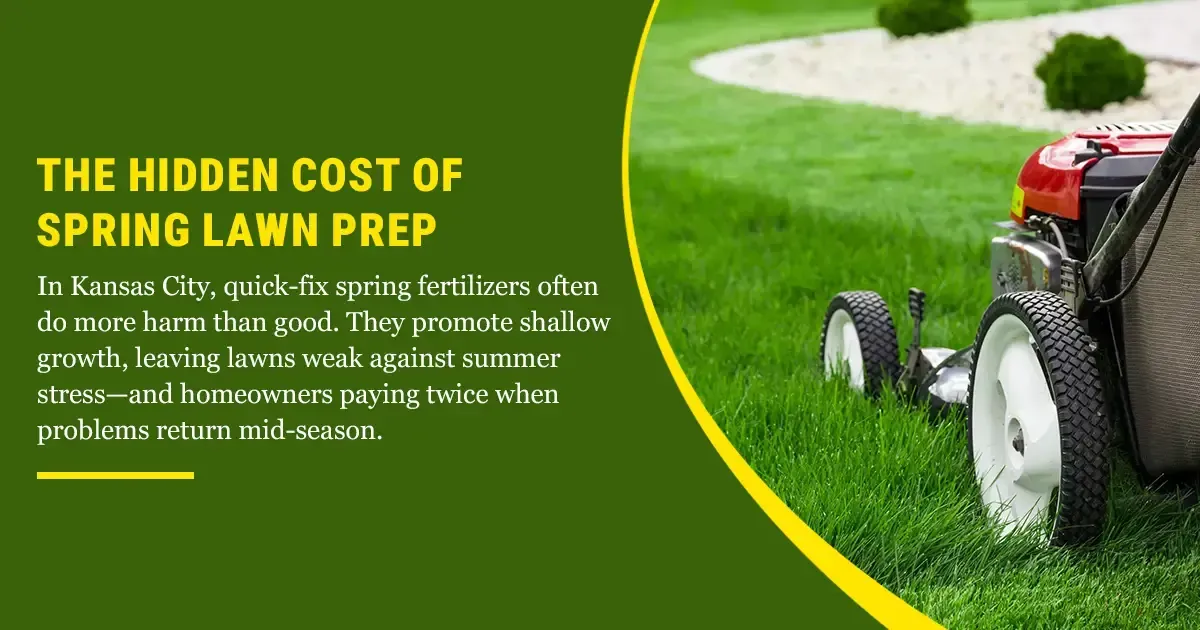Choosing the Right Grass Seed for Your Lawn
Transform Your Lawn: The Ultimate Guide to Choosing the Perfect Grass Seed for Enhanced Curb Appeal
Did you know that selecting the ideal grass seed can dramatically transform the look of your lawn, boosting your property’s value and overall appeal? When a well-manicured lawn catches the eye of passersby and neighbors alike, it can make a significant difference in how your home is perceived. As homeowners increasingly realize, curb appeal isn’t just about aesthetics—it’s also a smart investment. In this comprehensive guide, we explore the ins and outs of grass seed selection, discuss environmental factors and long-term impacts, and offer actionable strategies to help you cultivate a lush, attractive lawn tailored to your specific needs.
The Impact of Lawn Appearance on Property Value
A flourishing lawn does more than just create beauty—it also adds tangible value to your property. Studies have shown that homes with well-maintained exteriors can see noticeable increases in market value. For example, according to a recent study by the National Association of Realtors (data updated within the past year), a quality landscape can boost property value by a significant margin, sometimes even tipping the scales by up to 10%. A single curb appeal improvement not only enhances neighborhood aesthetics but also translates to higher satisfaction and pride for homeowners.
When you invest time and resources into lawn care, the results go beyond just visual appeal. A vibrant, uniform lawn reflects stability and care in home maintenance—qualities that potential buyers find desirable. Moreover, the financial benefits are not the only gains; nurturing a healthy lawn can also increase your quality of life, offering a serene, inviting space for family gatherings and relaxation.
Navigating the Complexity of Grass Seed Selection
Choosing the right grass seed involves more than just picking any variety off the shelf. The process requires careful consideration of several factors that contribute to the overall health and appearance of your lawn.
Understanding Different Grass Varieties
There are several popular types of grass seed, each offering unique characteristics and benefits:
- Kentucky Bluegrass: Known for its lush, dark green appearance and fine texture, Kentucky Bluegrass is a favorite for cooler climates. Its self-repairing ability makes it ideal for high-traffic areas, although it requires more intensive maintenance.
- Fescues: These grasses are adaptable and thrive in both shade and sun, making them suitable for regions with varying conditions. Their drought-tolerant nature reduces watering demands.
- Bermudagrass: Perfect for warmer climates, Bermudagrass is drought-resistant and recovers quickly from damage. It does well in full sun and is commonly used in sports fields and high-traffic home lawns.
When selecting a variety, it is crucial to align your choice with regional climate conditions, soil type, and sunlight availability. For example, if you reside in an area with long, hot summers, opting for drought-resistant varieties like Bermudagrass can ensure your lawn remains healthy during dry spells.
Environmental Considerations for Successful Lawn Care
A flawless lawn isn’t solely dependent on the seed itself. Environmental factors play a fundamental role in the success of your grass selection. Consider these key aspects:
- Soil Type: Understanding the composition of your soil is essential. Conduct a soil test to determine pH levels and nutrient content. This step helps inform the correct amendments and fertilizers needed to support grass growth.
- Climate: Your local weather and seasonal variations dictate the type of grass that will flourish in your outdoor space. Cool-season grasses perform best in regions with mild summers, while warm-season grasses thrive in hotter, sunnier climates.
- Sun Exposure: The amount of sunlight your lawn receives impacts the type of grass that can grow optimally. Areas with partial or full shade may require shade-tolerant varieties like certain fescues.
A careful evaluation of these factors ensures that the grass seed you select will not only survive but flourish in your specific environmental conditions.
Consequences of Poor Grass Seed Choices
Making the wrong choice in grass seed can have long-lasting impacts on your lawn’s health. Inadequate seed selection can result in patchy growth, excessive weed infestation, and increased maintenance costs over time.
For instance, opting for a cool-season grass in a predominantly warm climate may lead to a weakened lawn, higher water consumption, and a greater likelihood of stress damage during peak summer heat. This mismatch can result in extensive replanting efforts and higher expenditures on lawn repair. Conversely, selecting the proper seed type that fits naturally with your environmental conditions means a healthier lawn with fewer long-term maintenance issues.
Step-by-Step Guide to Transforming Your Lawn
Achieving a vibrant, green lawn is a task that can be broken down into manageable steps. The right plan of action, combined with attention to detail, ensures that your investment in good grass seed yields the best possible results.
Planning and Preparation
Before you even purchase a bag of grass seed, thorough planning is essential. Start by assessing your lawn’s current condition and making a plan to address any underlying issues, such as soil compaction or poor drainage.
- Assess Your Lawn’s Needs: Walk through your yard and note areas with poor grass cover or signs of soil erosion. Identify spots that receive different levels of sunlight, as this will affect your seed selection.
- Soil Testing: Conduct a soil test to understand its pH and nutrient levels. Local extension services often provide affordable testing services, and the results can guide you in choosing the appropriate seed and necessary amendments.
- Mapping and Zoning: Divide your lawn into zones based on sun exposure, moisture levels, and usage patterns. This segmentation allows you to tailor your seed choice and care regimen for each specific area.
Taking the time to plan thoroughly results in a targeted approach that minimizes waste and maximizes growth potential.
Selecting the Right Grass Seed
Now that you’ve assessed your lawn and clarified your needs, the next step is making an informed seed selection. Here’s a concise checklist to guide your decision:
- Climate Compatibility: Ensure the grass variety suits the local weather patterns. Cool-season grasses, such as Kentucky Bluegrass, work best in northern regions, while warm-season grasses, like Bermudagrass, thrive in the south.
- Water Requirements: Consider your region’s water availability. Drought-resistant varieties can save both water and money.
- Maintenance Level: Evaluate how much time and effort you are willing to invest. Some grasses require frequent mowing, fertilization, and regular care, while others need minimal upkeep.
- Soil Adaptability: Choose a seed that matches the soil’s pH and nutrient profile. Amending your soil in advance can optimize growth conditions.
Expert Assistance from Trusted Partners
For many homeowners, the process of evaluating and selecting the right grass seed feels overwhelming. This is where the expertise of professionals can be incredibly valuable. LawnScape Specialists offer personalized lawn assessments that consider your specific environmental conditions and aesthetic goals. Their experienced team uses advanced technology to recommend the best seeds and care practices, ensuring that every aspect of your lawn—from seed quality to maintenance—is optimized for success.
One client shared how their yard transformed from a neglected space into a thriving oasis after a detailed consultation. By following the recommendations, including the use of a drought-resistant variety for the dry summer months, the homeowner enjoyed not only improved curb appeal but also a reduction in water bills and overall maintenance costs.
Innovations in Grass Seed Technology
The grass seed industry is continuously evolving. Recent technological advancements have led to the development of improved seed varieties that boast enhanced resistance to common problems like drought and pest infestations. Fast-germinating seeds allow for quicker establishment, reducing the vulnerable period when weeds can take hold. These innovations ensure that your lawn is not only beautiful but also resilient in the face of changing environmental conditions.
Leveraging these new seed technologies means you can achieve a healthier lawn faster—making them an attractive option for both first-time homeowners and seasoned gardeners looking to revitalize their outdoor spaces.
Practical Techniques for a Lush, Green Lawn
Once you have selected the ideal grass seed, implementing proper planting and maintenance practices ensures lasting success.
Step-by-Step Seeding Success
Achieving a green, thriving lawn is a process that can be broken down into actionable steps:
- Soil Preparation: Begin by removing any debris, weeds, or old grass residues. Loosen the soil using a rake or garden tiller to allow for better seed-to-soil contact. If necessary, add organic compost or fertilizers based on your soil test recommendations.
- Seeding Process: Distribute the grass seed evenly over the prepared soil. Using a seed spreader can help achieve an even distribution.
- Raking and Rolling: Lightly rake the seeded area to ensure that the seeds come into contact with the soil. Rolling the area with a lawn roller helps improve seed-to-soil contact and ensures a uniform surface.
- Watering Schedule: Water the area gently and consistently at first. In the first few weeks, focus on keeping the soil moist but not waterlogged. As the grass establishes, gradually adjust your watering schedule to promote deep root growth.
Lawn Maintenance After Seeding
Even after successful seeding, continued lawn care is vital. Follow this checklist to maintain your lawn’s health:
- Water Wisely: Once your grass is established, switch to a less frequent but deeper watering routine. This helps develop stronger root systems.
- Mowing Practices: Mow your lawn regularly, maintaining a cutting height that is appropriate for the grass variety. Avoid cutting more than one-third of the grass blade at a time to prevent stress.
- Fertilization Regimen: Apply fertilizers based on seasonal needs. Use slow-release fertilizers that provide steady nutrients without burning the young grass.
- Weed Control: Keep an eye out for weed growth. Early intervention through manual removal or environmentally friendly herbicides can keep unwanted plants at bay.
- Aeration: Periodically aerate your lawn to relieve soil compaction and improve nutrient absorption.
Visual aids such as infographics and step-by-step charts can be very helpful in illustrating the above steps, making it easier for novice gardeners to follow through with the process.
Real-Life Success Stories
Many homeowners have experienced dramatic transformations by choosing the right grass seed and following expert advice. One notable case involved a family who had long struggled with uneven patches and persistent weed problems. After consulting with LawnScape Specialists, they switched to a blend that was better suited to their region’s climate. Within a single season, not only did the overall appearance of their lawn improve, but the energy required for maintenance was noticeably reduced. They reported an increase in neighborhood compliments and received inquiries from potential buyers about their well-kept property. Such stories highlight the tangible benefits of making informed decisions about grass seed.
The Long-Term Benefits of a Well-Chosen Grass Seed
Investing in the right grass seed can have far-reaching benefits beyond immediate aesthetics. Here are some of the key long-term advantages:
- Improved Property Value: A healthy, vibrant lawn is an attractive asset to prospective buyers. As mentioned earlier, well-maintained exteriors can boost property values by up to 10%.
- Lower Maintenance Costs: Choosing varieties that are naturally suited to your local climate reduces the need for excessive watering, fertilization, and pest control. Over time, this lowers overall maintenance costs.
- Environmental Benefits: Sustainable lawn care practices, complemented by the use of appropriate grass seed, contribute to water conservation and reduced chemical usage. This supports a healthier environment.
- Enhanced Outdoor Living: A beautiful lawn creates a multifunctional outdoor space for family activities, gardening, or simply enjoying nature. It becomes an extension of your home that adds quality and value to your lifestyle.
Urban planners and landscaping experts often emphasize the value of green spaces in residential areas. Their research shows that consistently well-maintained lawns not only raise local property values but also promote community well-being.
Addressing Common Concerns (FAQ)
What is the best time to plant grass seed in my area?
The best time to plant grass seed depends on the type of grass and your local climate. Generally, cool-season grasses do best in early fall or spring, while warm-season grasses are best planted in late spring through early summer. For personalized advice, consider local extension service recommendations or contact a trusted landscaping professional.
How often should I water my lawn after seeding?
In the first few weeks after seeding, it’s important to keep the soil consistently moist without over-watering. This typically means watering lightly once or twice a day, depending on weather conditions. As your grass begins to establish, gradually shift to deeper, less frequent watering sessions to encourage strong root growth.
Can I mix different types of grass seed for my lawn?
Yes, mixing different grass varieties, often referred to as a seed blend, can be beneficial. Blends are especially useful when your lawn has varying conditions, such as areas of sunlight and shade. A well-chosen blend can improve overall lawn resilience and reduce the risk of disease spread.
How do I prevent weed growth after planting grass seed?
Maintaining a dense and healthy lawn is one of the best ways to naturally suppress weed growth. Additionally, follow a regular maintenance schedule that includes proper mowing, fertilization, and timely weeding. Pre-emergent herbicides recommended by professionals can also help keep weeds at bay—apply them as directed, keeping in mind the timing relative to seeding.
Is it necessary to get a professional lawn assessment?
While some homeowners may be comfortable assessing their own lawns, a professional assessment can provide insights that save time and money in the long run. Experts, such as those at LawnScape Specialists, can recommend the best grass seed varieties and tailored care plans, ensuring your lawn is optimized for your local conditions.
Bringing It All Together: Your Path to a Stunning Lawn
A well-chosen grass seed is just the beginning of the journey to a vibrant, appealing lawn. From careful planning and environmental assessment to implementing effective seeding and maintenance strategies, every step plays a crucial role. The key is to understand your unique conditions and choose a seed that fits seamlessly with your local climate, soil, and yard usage.
Making informed choices not only enhances your home’s curb appeal but also reduces long-term maintenance challenges. In today’s competitive real estate market, a lush lawn is an investment that pays dividends in both aesthetic pleasure and property value. Whether you are undertaking a full-scale lawn renovation or simply patching a few problematic areas, the right grass seed makes all the difference.
For those feeling uncertain about navigating the complexities of grass seed selection alone, trusted partners like LawnScape Specialists can provide invaluable guidance. Their expertise is built on years of hands-on experience, offering personalized consultations that take the guesswork out of lawn care. By relying on professional insights, you set yourself on the path to sustained success and a lawn that stands out in any neighborhood.
Conclusion
The journey to transforming your lawn begins with the thoughtful selection of the perfect grass seed. By investing time in understanding your environment, the needs of your soil, and the specific characteristics of various grass types, you lay the foundation for a resilient and visually appealing lawn. Through proper planning, attentive care, and incorporating innovations in seed technology, you can achieve not only enhanced curb appeal but also a long-term increase in your home’s value.
Now is the perfect time to take action. Review your lawn’s current condition, gather the necessary information through soil testing and environmental assessments, and choose a grass seed that meets your long-term needs. Consider the benefits of professional guidance—LawnScape Specialists offer personalized lawn evaluations that can effortlessly align your vision with practical, effective solutions.
Take the next step towards a beautiful, healthy lawn by leveraging the strategies and tips shared in this guide.
What factors should I consider when choosing grass seed for my lawn?
When choosing grass seed, consider your local climate, soil type, water availability, and sun exposure. These factors determine which grass varieties will thrive in your yard. It’s also important to align your choice with your intended maintenance level and overall aesthetic goals.
How long does it take for new grass to fully establish?
The establishment period varies with grass type and environmental conditions. Typically, cool-season grasses can take anywhere from 2 to 3 months to establish fully, while warm-season grasses may take 3 to 4 months. Consistent watering and proper care during the initial weeks are critical for successful establishment.
Can poor seed selection affect my long-term lawn maintenance costs?
Yes, poor seed selection can lead to significant long-term challenges, including increased watering needs, susceptibility to disease, and persistent weed issues. Selecting the appropriate seed for your local conditions reduces these risks and lowers overall maintenance expenses.
How often should I fertilize my lawn after planting new grass?
Fertilization schedules depend on the grass type and local soil conditions. Typically, once your new grass has started to establish, you can begin a fertilization regimen that aligns with seasonal changes—usually once in the spring and again in the fall for cool-season grasses. Always follow the guidelines recommended by soil test results or professional advisories.
Is professional consultation essential for lawn transformation?
While DIY approaches can work for some, professional consultations—like those offered by LawnScape Specialists—help tailor solutions to your specific needs. Their personalized assessments can pinpoint challenges and recommend the most effective grass seed varieties and maintenance practices, ensuring lasting success.
Creating a beautiful, enduring lawn is an achievable goal when guided by informed decisions and careful planning. With the right grass seed and proper maintenance, your outdoor space can not only boost your property’s curb appeal but also become a source of pride and enjoyment. Follow the steps outlined above and embrace the change that a vibrant, healthy lawn can bring.
Ready to see your lawn transform? Reach out to LawnScape Specialists for a personalized consultation and start your journey towards a greener, more valuable property. With expert advice and tailored strategies, your perfect lawn is within reach.










